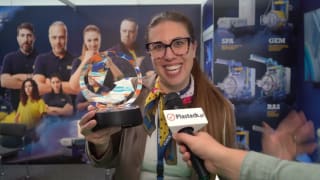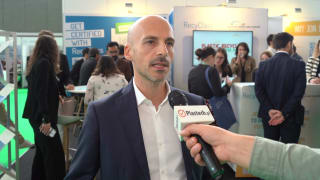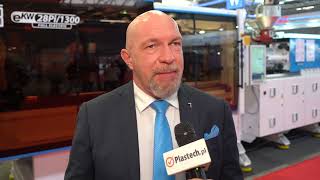Full concept Bottles & Shapes
The impact the use of recyclate in different quantities and qualities has on the stability and weight of the bottle is taken on board, however, in order to positively influence the ecobalance. On the basis of various design criteria and material properties the holistic Bottles & ShapesTM consultancy program offers line-compatible bottle systems and solutions which strike the right balance between cost and sustainability issues, marketing criteria and user handling. “This calls for a wealth of expertise which we can provide with our decades of experience,” confirms Wiese. Moreover, KHS stretch blow molders have been optimized so that they can process preforms which contain up to 100% recyclate and, alternatively, biopolymer constituents - in other words, from renewable raw materials. “The relevance of these materials will increase considerably in the future. Here, we’ve provided the technical means of generating an increase in added value right down the line while saving on resources – such as with the new InnoPET Blomax Series V generation of stretch blow molders,” Wiese continues.
Secondary packaging with a high savings potential
The KHS Competence Center for secondary packaging systems in Kleve, Germany, has long been working on alternatives to classic shrink film. Many of these require extensive testing on the machinery. “The greatest challenge for us is the processability of the packaging materials,” says Karl-Heinz Klumpe, packaging product manager at KHS. “Shrink film made of recycled plastic demonstrates very different shrinking properties versus film made of new material. As an engineering company we can’t provide all the answers ourselves but instead have to coordinate closely with film manufacturers.” KHS stages workshops with these partners in order to do just that, where the participants aim to find out how the percentage of recyclate in film – as stipulated by the new German Packaging Law, for example - can be increased further. Changes to the chemicals or recipe of the film and adaptation of the machine equipment are among the necessary measures which need to be taken here. “The basic proviso is that there’s a standard of quality which is accepted by the big bottlers’ marketing departments. With film made of 100% recyclate the shrink results aren’t yet satisfactory. We’re continuing to rapidly drive development together here to close the gap between growing recycling requirements on the one hand and the demand for packs of ever increasing quality on the other,” Klumpe emphasizes.
Unique Nature MultiPackTM system
With the development of the Nature MultiPack KHS already has a film-free pack in its portfolio which is a pioneer when it comes to sustainability. This reduced form of secondary packaging even makes conventional shrink film on multipacks completely redundant. Here, PET bottles or cans are held together by nothing more than several strong dots of adhesive which are easy to remove. A self-adhesive carrying handle readies the pack for transportation. The dots of adhesive themselves do not impair the quality of the material to be recycled in any way whatsoever as they are easily removed during the recycling process. The Nature MultiPack was launched to market as a six pack of cans by the Carlsberg Group under the name of Snap Pack in 2018. Danone Waters first made successful use of this packaging system in 2016 when it launched its Prestige PET bottle for Evian. With it plastic waste is completely avoided as there is no more film packaging to be disposed of.
“The current debate on packaging waste has clearly further heightened our awareness for environmentally-friendly packaging systems,” says Klumpe. KHS now offers many different market-proven systems - particularly for PET containers and secondary packaging – which have been proved to specifically help its customers in their endeavor to be more sustainable. “We all take the public discussion seriously and are working directly with all those companies involved on further developments in an attempt to curb the pollution of our environment by plastic as much as we can with the help of our expert knowledge and expertise,” he adds. “In the end we’re all consumers and all of us bear clear responsibility for our own personal actions.”



